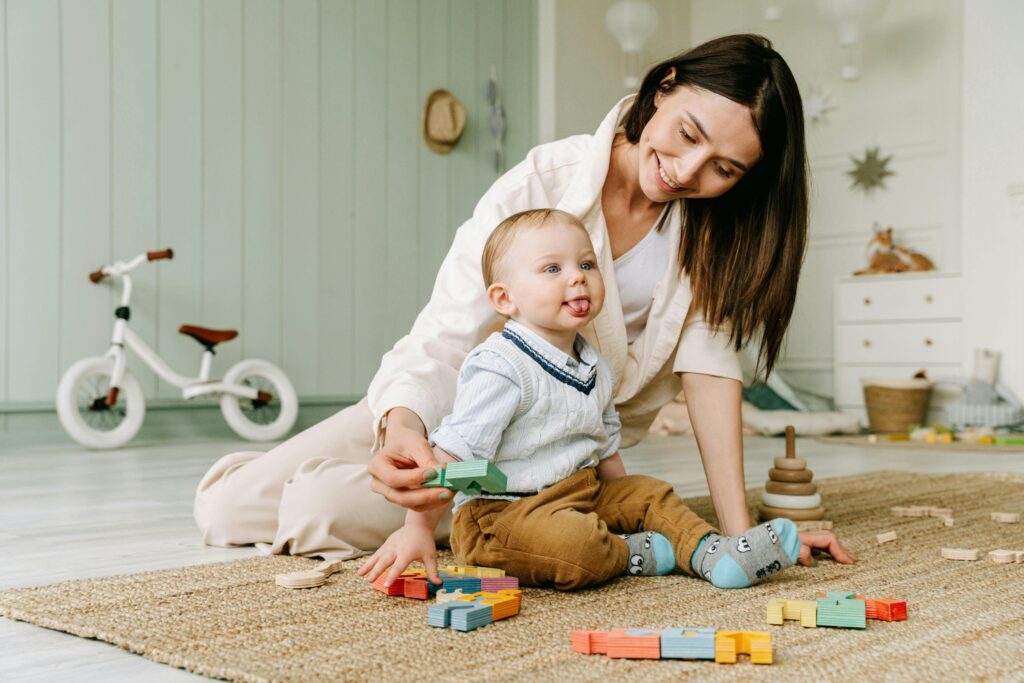
If your child has been recommended for ABA therapy, you’re probably wondering: What does a typical session actually look like? Will my child enjoy it? How can I be involved?
ABA therapy (Applied Behavior Analysis) can feel unfamiliar at first, especially if you’ve never seen a session in action. This guide will walk you through what a day of ABA therapy might look like — whether it’s home-based, center-based, or even in a preschool or daycare setting.
ABA therapy is a structured, evidence-based approach that helps children with autism and other developmental differences build essential skills—like communication, social interaction, self-help, and behavior regulation.
Rather than being a “one-size-fits-all” program, ABA therapy is personalized for each child’s unique needs, learning style, and developmental goals.
While no two days are exactly the same, most ABA therapy sessions follow a structured flow to maximize learning and fun.
Whether your child is at a center or at home, therapists begin by helping the child transition into the session. This may include:
Greeting routines
Reviewing a visual schedule
Light play to build rapport
Assessing mood or behavior
This “warm-up” helps the child feel comfortable and sets a positive tone for learning.
This is the heart of the session. ABA therapy breaks down complex skills into smaller, teachable parts and builds them step-by-step. These structured activities are based on your child’s treatment plan and may include:
Communication (e.g., asking for items, labeling objects)
Social skills (e.g., sharing, greetings, turn-taking)
Cognitive skills (e.g., matching, sorting, identifying colors/numbers)
Play skills (e.g., pretend play, functional play)
Self-help (e.g., brushing teeth, toileting routines)
These skills are often taught through a mix of structured table-time and natural environment teaching (NET), which blends learning into everyday play.
ABA therapists use positive reinforcement to encourage learning. When your child successfully completes a task, they might earn:
Verbal praise
A favorite toy or game
Access to a preferred activity (like bubbles or a swing)
This keeps your child motivated, engaged, and excited to learn.
ABA therapy is intense work! Children are given breaks to relax and reset between tasks. These breaks can include:
Independent play
Sensory activities
Snack time
Therapists monitor break times to ensure they’re refreshing without derailing focus.
Throughout the session, therapists collect detailed data on every skill your child is working on. They track:
How many prompts were needed
Whether the skill was mastered, emerging, or not demonstrated
Behavioral responses and patterns
This data is used to adjust the treatment plan in real time and ensure your child continues to grow.
Many ABA programs include time for parent coaching or check-ins, either during or after the session. You might:
Review new skills your child is learning
Learn strategies to reinforce those skills at home
Ask questions or share observations
Parental involvement is critical for success — when home and therapy are aligned, children progress more quickly.
In a center-based, full-day program, the schedule might look something like:
| Time | Activity |
|---|---|
| 8:30–9:00 AM | Arrival & transition to therapy |
| 9:00–10:30 AM | Skill-building activities |
| 10:30–10:45 AM | Snack and sensory break |
| 10:45–12:00 PM | Social play and communication drills |
| 12:00–1:00 PM | Lunch and free play |
| 1:00–2:30 PM | Functional routines & toileting practice |
| 2:30–3:00 PM | Review, parent update, wrap-up |
In home-based sessions, sessions are often 2–4 hours and incorporate more natural routines like meals, playtime, and family interactions.
Here are a few techniques your child’s ABA therapy team might use:
A structured method where a skill is broken into small steps. Each step is taught systematically with prompts and reinforcement.
Example: Therapist: “Touch your head.” Child touches head. Therapist: “Great job!” + high-five.
Skills are taught during everyday routines or play. This helps generalize learning.
Example: During snack time, your child learns to request “more” or identify foods.
Breaking down a complex skill into manageable steps.
Example: Toilet training might include 10 small steps, like walking to the bathroom, pulling down pants, sitting, wiping, flushing, and washing hands.
Even if you’re not sitting in each session, you play a key role in your child’s success. Here’s how to stay involved:
Ask for regular progress updates
Watch or participate in sessions when possible
Use consistent language and strategies at home
Celebrate wins, even small ones — your encouragement means everything
Starting ABA therapy can feel like stepping into a new world. But once you understand what a day looks like, it becomes far less mysterious — and much more empowering.
ABA therapy is rooted in structure and science, but it’s also filled with joy, connection, and celebration. Every moment — from teaching a child to say “hi,” to helping them use a spoon or play with a friend — builds toward a more independent, fulfilling life.
Your child’s journey is unique, and ABA therapy can be a powerful partner every step of the way.